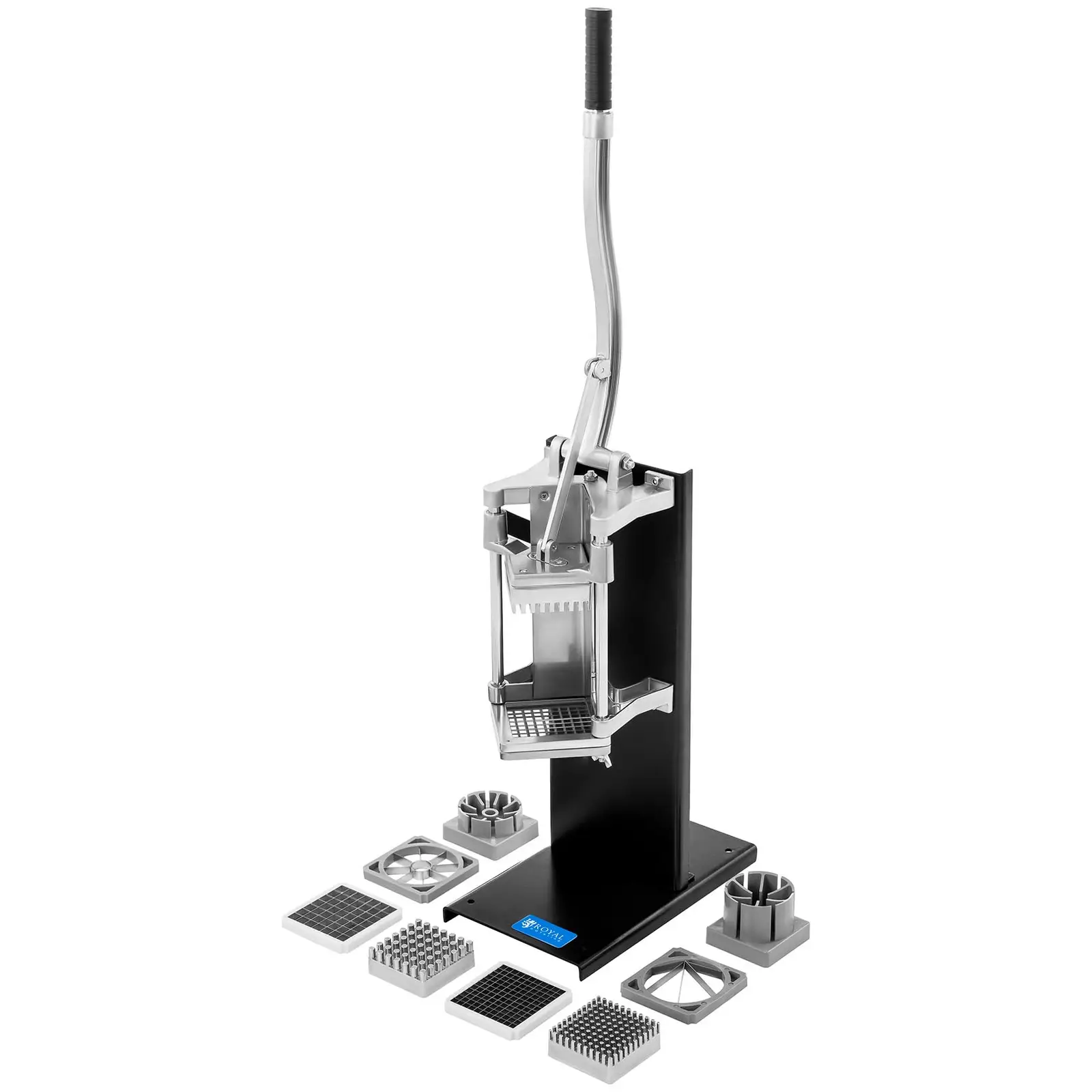Cutting vegetables is something you need to do almost every day at home, and a basic task in commercial kitchens - whether you're making soup, preparing sandwiches, or cooking delicious stews. However, vegetable cutting techniques can also be a real art, turning your dishes into not only delicious, but also visually enticing meals.

Cutting vegetables is something you need to do almost every day at home, and a basic task in commercial kitchens – whether you’re making soup, preparing sandwiches, or cooking delicious stews. However, vegetable cutting techniques can also be a real art, turning your dishes into not only delicious, but also visually enticing meals.
How to cut vegetables – the most popular methods
As is often the case with culinary vocabulary, cutting techniques have French names. .
As the popularity of cooking techniques spread across the globe, so did terminology used by professional chefs preparing dishes that are not only a delight for your taste buds, but are also visually appealing. How to cut vegetables? Discover the most popular vegetable cutting techniques and their names, and serve dishes that will amaze your guests before they have even started eating.
Slices (vichy)
Some say that the vichy chopping technique applies only to carrots, others that it applies to all shapely vegetables. This method is used to obtain approximately 1-2 mm thick slices, which look great in soups, stews and salads. If the slices are too large, they can easily be cut in half. Vegetables prepared in this way can be used in soup or as decorative elements in restaurants.
Matchsticks (julienne)
Cutting 3-4 cm long, 1 mm thick vegetable sticks can be a real challenge for home cooks, but an everyday task of professional chefs. This method is perfect for cutting carrots, potatoes, beetroots, celery and leeks, for use in salads. Such thin vegetable strips are also perfect for Asian dishes – they taste especially good when prepared with the stir-fry method.
Chips (batonnet)
The batonnet method is a less time-consuming technique for cutting vegetables than julienne. This technique is also about strips, although much thicker – even 0.5 cm – but the same length as julienne matchstick slices. Vegetables cut using the batonnet method will work well as an addition to soups and stews, but it is also a great idea to serve them raw, e.g. with hummus or various dips.
Brunoise – i.e. very fine
Brunoise is a technique for dicing vegetables – in an ideal world, the dimensions of a perfect brunoise are 2×2×2 mm. In real life, however, no one requires such precision from chefs, although the cubes should really be very small. Vegetables cut this way are perfect for decorating dishes, as a stuffing ingredient and used in omelettes or rice dishes, but some people also use such precisely cut vegetables as an ingredient of soups or various sauces.
Macedoine – classic cut
Do you feel that the brunoise technique might be a bit too advanced for you? If so, then the macedoine technique will let you breathe a sigh of relief. This method also involves cutting vegetables into cubes, but larger – each side is around 5 mm thick. The technique is commonly used in home kitchens and small restaurants, although also in commercial kitchens.
Cutting vegetables – necessary knives in commercial kitchens
Knives are the most important thing in any commercial kitchen – an appropriate set will allow you to prepare even the most demanding dishes. However, you need to know not only how to sharpen your knives, but also how to use them. Below are the most important types of knives needed in order to master the techniques of cutting vegetables, and not only:
- Chef’s knife – a wide and exceptionally sharp blade is its main feature. Large and heavy, it lies securely in your hand, letting you make precise cuts – whether cutting meat and filleting fish, or dividing vegetables and fruit into pieces.
- Universal knife – long, but noticeably thinner than the chef’s knife. It is suitable for slicing cold meats, cutting vegetables and fruits, and also for peeling.
- Vegetable knife – small, short and very handy, it is used for peeling and scraping. It is also great for slicing potatoes, cucumbers, carrots and all other vegetables.
- Bread knife – a long knife with serrated teeth. Ideal for cutting both large loaves of bread and smaller rolls or buns.
- Peeling knife – a relatively small knife with a rounded blade. It lets you easily peel vegetables and fruits.
- Meat knife – raw meat is full of muscle fibres, which makes it difficult to cut into perfectly thin slices. This long and thin knife with a smooth blade will come to the rescue in such cases.
- Cheese knife – there are several types of cheese knife. If you are a fan of different types of cheese or serve cheese boards in your restaurant, you should get them all.
- Tomato knife – its serrated blade lets the knife easily cut through tomato skin, making it easy to cut tomatoes into thin slices.
- Santoku knife – this knife has a characteristic shape. Handling its curved blade requires some practice, but mastering it is worth the effort, letting you effectively cut vegetables and fruit or portion meat.
Will a set of professional knives be enough to create unique fruit and vegetable decorations in your restaurant? The answer is yes, but only if used by a professional chef. Make sure you hire a chef who knows how to cut vegetables and deal with other technical aspects vital for preparing top-quality dishes. Your menu will then attract even more guests.
Vegetable cutting techniques – summary
How to cut vegetables? This seemingly obvious question is actually not so easy to answer, as it requires many years of experience gained by professional chefs. There are many techniques for cutting vegetables – those mentioned above are just a small part, showing how advanced culinary skills can be.










Share